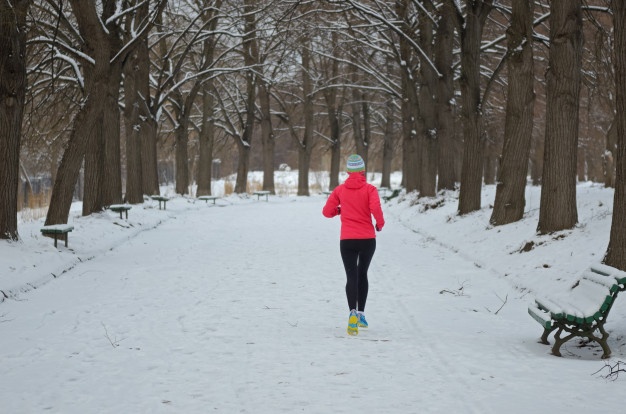Running in the winter is dangerous and bad for your health. Nothing could be further from the truth! Medically speaking there’s no reason to avoid taking part in outdoor endurance sports during the winter.
Here are a few ideas for the best workouts even in the coldest temperatures.
Choose suitable clothing. Cover yourself well… but not too much. The most important thing is to protect the torso: chest, abdomen and lumbar region. This is where the most important organs and the large blood vessels are located. The best approach is to choose multi-layered and functional clothing that can wick moisture to the outside and therefore evaporate perspiration. So go for thermal underwear, full leggings, a long-sleeved tee, windproof waistcoat or jacket, gloves, cap and sports sunglasses. Running on snow requires far greater effort due to the uneven terrain, meaning that it’s essential to choose the right shoes to give you a good grip.
Set off slowly. In cold conditions you need to bear in mind that the only powerful muscles are warm muscles! Your muscular system, tendons and connective tissue must therefore be made more supple with a vigorous warm-up. The best thing to do is to speed up your circulation and warm your muscles with indoor gymnastic exercises, then setting off slowly while pacing your speed.
Better longer than too quickly. Long and not over-intense workouts are undoubtedly preferable to those carried out at high speed and intensity. At moderate speeds your heart rate stays low and you breathe in less cold air. When running long distances it’s essential to keep hydrating and to carry a few small snacks to top up your energy.
No intervals and no records. High-intensity or interval training is not recommended in cold and/or icy wind conditions, since inhaling a higher quantity of frozen air can irritate the airways. Like hot temperatures, the cold also limits performance. A study of marathon runners has shown that, at 4 degrees below zero, sports performance drops by 10% in comparison with 10 degrees. In the coldest season it’s therefore advisable to avoid trying too hard to beat your personal best.
Breathe through your nose. Inhaling frozen air through your mouth cools the respiratory tract, making it more vulnerable to cold viruses. The bronchi are the airways most at risk. At low temperatures you therefore need to breathe through your nose, which heats and humidifies the air more effectively and delays the cooling of the respiratory tract.
Don’t get cold. After running your clothing will be damp and the combination of cold and wind will cool the body even more rapidly. You therefore need to get changed as soon as you’ve finished the workout.
No workouts if you have the flu! Working out with a fever is definitely ruled out! The best thing is to wait a few days before running again, giving your body the chance to recover.
Happy running!
(Fonte: datasport)








